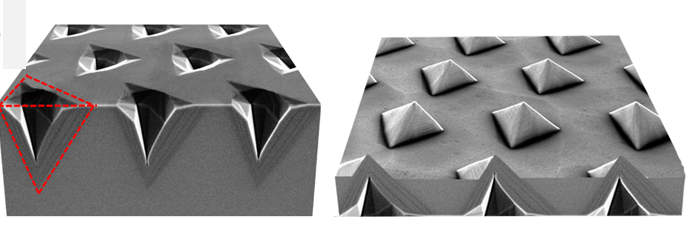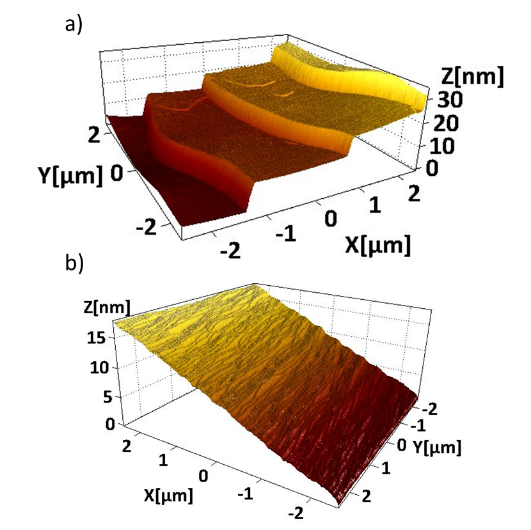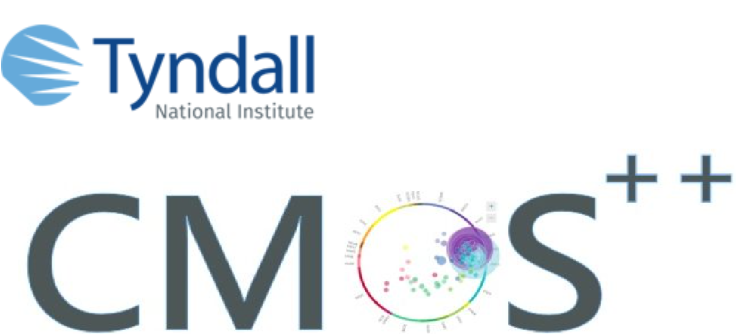Head of Epitaxy and Physics of Nanostructures Group
Biography
Dr. Pelucchi started his PhD in 1997, in the field of surface science and MBE with Prof. Franciosi at TASC National Laboratory, Italy. His research covered MBE of II-VI materials on III-V substrates and photoemission applied to interface physics. He moved to Lausanne in 2001 as a post-doc with Prof. Eli Kapon. He was involved in the research of MOVPE of site controlled III-V nanostructures, both V-groove quantum wires and single pyramidal QDs. The effort of this research over 5 years yielded a rich harvest of scientific results and attracted wide attention in the semiconductor and photonic fields.
In May 2006, Dr. Pelucchi was awarded a Science Foundation Ireland Principal Investigator Grant and moved to the Tyndall Research Institute- University College Cork in January 2007 where he set up a new research group in the field of III-V epitaxy for device applications, semiconductor site controlled quantum dots and their applications to quantum optics and information.
He is currently a Head of group at Tyndall and jointly a Senior Research Fellow of the University Dept. of Physics.
Research Interests
Dr. Pelucchi interests are broad and divided along two main research lines intertwined with his role of head of the MOVPE III-V national facility. The first research line is around developing sources of quantum light based on III-V materials, and epitaxially grown by MOVPE (Metalorganic Vapour Phase Epitaxy). Particularly successful has been the effort dedicated to site-controlled quantum dots, which were proven as efficient single and entangled photon emitters, both by optical excitation and electrically driven.

Recent research on this front is focusing on quantum dot coherence properties and their hybrid integration in photonic chips.
The second research line spams directly from the MOVPE processes, which are surprisingly poorly understood despite at least 40 years of research efforts in the community. The EPN group has indeed been at the forefront of the understanding surface processes and the extraordinary variety of processes involved (and has highlighted the major role that precursor surface dynamics has in determining the epitaxial outcome).
Starting with the remarkable variability of surface step organization the group has been investigating the effects of a number of growth conditions and surfactant behaviors, all coherently delivering a picture of astounding complexity in terms of the surface dynamics processes involved during MOVPE semiconductor growths.
Moreover, the group has been active over a number of other research grounds, for example recently demonstrating the first metamorphic laser on GaAs emitting beyond the 1.3 micron limit.

Research Grants
- The EPN group has been very active over the years. Together with a number of investigator awards from SFI, Dr. Pelucchi is co –PI in the Irish Photonic Integration Centre (IPIC) and collaborator in a number of EU and EI projects.
- The overall value of the acquired funds as main and co-PI is well beyond 50 million euros.
- To note that he also is co-PI in a recently funded Disruptive Technology Fund, aimed at developing integrated quantum technologies in Ireland. (DTIF Qcoir: Quantum Computing in Ireland: A Software Platform for Multiple Qubit Technologies)
Research profiles
- Scholar: https://scholar.google.com/citations?user=lSDHT9IAAAAJ&hl=en
- ORCID: https://orcid.org/0000-0001-7682-0601
- Publons: https://publons.com/researcher/1370025/emanuele-pelucchi/
Highlighted publications
- Gediminas Juska, Valeria Dimastrodonato, Lorenzo O. Mereni, Agnieszka Gocalinska and Emanuele Pelucchi “Towards quantum dot based arrays of entangled photon emitters”, Nature Photonics 7, 527 (2013).
- T. H. Chung, G. Juska, S. T. Moroni, A. Pescaglini, A. Gocalinska and E. Pelucchi, “Selective carrier injection into patterned arrays of pyramidal quantum dots for entangled photon light-emitting diodes”, Nature Photonics 10, 782–787 (2016)
- V. Dimastrodonato, E. Pelucchi, and D. D. Vvedensky, “Self-limiting profile evolution of seeded two- and three- dimensional nanostructures during metalorganic vapor-phase epitaxy”, Phys. Rev. Lett. 108, 256102 (2012).
- A. Gocalinska, M. Manganaro, E. Pelucchi and D.D. Vvedensky, “Surface organization of homoepitaxial InP films grown by metalorganic vapor-phase epitaxy”, Phys. Rev. B 86, 165307 (2012).
- G. Juska, V. Dimastrodonato, L. O. Mereni, T. H. Chung, A. Gocalinska and E. Pelucchi, B. Van Hattem, P. Corfdir, and M. Ediger, “Complex optical signatures from quantum dot nanostructures and behavior in inverted pyramidal recesses”, Phys. Rev. B 89, 205430 (2014).
- S. T. Moroni, T. H. Chung, G. Juska, A. Gocalinska, E. Pelucchi “Statistical study of stacked/coupled site-controlled pyramidal quantum dots and their excitonic properties” Appl. Phys. Lett. 111, 083103 (2017)
- G. Juska, E. Murray, V. Dimastrodonato, T. H. Chung, S. T. Moroni, A. Gocalinska, and E. Pelucchi, “Conditions for entangled photon emission from (111)B site-controlled Pyramidal quantum dots”, Journal of Applied Physics 117, 134302 (2015).
- Emanuele Pelucchi, Stefano T. Moroni, Valeria Dimastrodonato, Dimitri D. Vvedensky “Self-ordered nanostructures on patterned substrates” Journal of Materials Science: Materials in Electronics 29 952–967 (2018).
- Agnieszka M. Gocalinska, Enrica E. Mura, Marina Manganaro, Gediminas Juska, Valeria Dimastrodonato, Kevin Thomas, Andrew Zangwill, Dimitri D. Vvedensky, and Emanuele Pelucchi” Early stages of InP nanostructure formation on AlInAs”, Phys Rev. B 101, 165310 (2020)
- Gediminas Juska, Iman Ranjbar Jahromi, Francesco Mattana, Simone Varo, Valeria Dimastrodonato, and Emanuele Pelucchi, “Biexciton Initialization by Two-Photon Excitation in Site-Controlled Quantum Dots: the Complexity of the Antibinding State Case”, Applied Physics Letters 117, 134001 (2020)
Public Engagement
The EPN group is very active in outreach activities towards public audiences. To note for example that Dr. Pelucchi research is featured in the Boole Documentary sponsored by UCC (2015), and that he held a “Café Scientifique” at the Royal Soc. Summer Science Exhibition in London summer 2015. His recent works in Nature Photonics have been featured in a number of Tech/media News sites.
Contact Details
- Dr. Emanuele Pelucchi – Head of Epitaxy and Physics of Nanostructures
- Tyndall National Institute,
- University College Cork
- Lee Maltings
- Dyke Parade
- T12R5CP
- Cork, Ireland
- Telephone +353 21 234 6655
- email: emanuele.pelucchi@tyndall.ie

